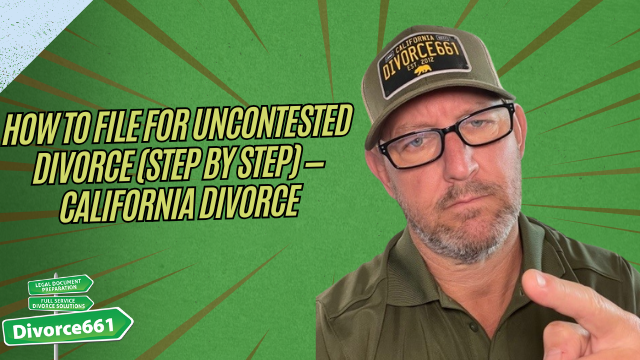SIMPLE DIVORCE? Short Term MARRIAGE? STOP doing THIS : Santa Clarita Divorce
I’m Tim Blankenship of Divorce661. If you and your spouse have been married a short time, have no kids from the marriage, and have little or no assets or debts, you may be using the wrong process. I keep getting clients who start a regular divorce when there’s a far simpler option available: summary dissolution. Look into summary dissolution — it’s much easier.
Why summary dissolution matters
Most people automatically file a regular divorce because it’s what they’ve heard of. That process can be unnecessarily long, expensive, and paperwork-heavy for couples with straightforward situations. Summary dissolution is a streamlined procedure designed for uncomplicated separations. If you qualify, you can wrap things up faster and with less stress.
Who typically qualifies for summary dissolution?
Eligibility rules vary by state, but summary dissolution is generally intended for truly simple cases. Typical requirements include:
- Short-term marriage (often limited to marriages of a few years or less)
- No children together and no one is pregnant
- No real property (house or land) to divide
- Only small or no separate or community assets and debts
- Both parties agree to the terms and are willing to sign the necessary paperwork
If your situation includes significant assets, property, disputed debts, custody issues, or one spouse does not agree, summary dissolution may not be appropriate.
Benefits of choosing summary dissolution
- Faster resolution — fewer forms and steps than a full divorce
- Lower cost — typically less filing fees, less attorney time
- Simpler paperwork — the process is designed for straightforward agreements
- Less court involvement — many cases finalize without contested hearings
Common mistakes people make
Here are two frequent errors I see:
- Filing a regular dissolution when they qualify for summary dissolution — this wastes time and money.
- Assuming summary dissolution applies when there are hidden issues — unpaid debts, tax liabilities, retirement accounts, or property in either spouse’s name can disqualify you or cause problems later.
How to proceed — practical steps
- Confirm eligibility: Check your state’s requirements or ask the court self-help center. If you’re in Santa Clarita (Los Angeles County), start with local family court resources.
- Gather documents: Income statements, bank records, debt information, and any ownership records for property or vehicles.
- Fill out the correct forms: Summary dissolution usually has its own packet. You’ll need the petition and an agreement outlining division of assets and debts.
- File jointly if required: Many summary procedures require both spouses to sign off and file together.
- Finalize: Follow the court’s instructions to finalize the dissolution. If all is in order, it will typically be far quicker than a standard divorce.
When not to use summary dissolution
Don’t use summary dissolution if you have:
- Children from the marriage or custody/support issues
- Real property (a house or land) to divide
- Significant assets, retirement accounts, or complex financial situations
- Contested issues where one spouse disagrees
Choosing the wrong process can leave important issues unresolved — and that can come back to bite you later.
Tips for Santa Clarita / California residents
If you live in Santa Clarita or elsewhere in California, use your county court’s family law self-help resources to confirm whether summary dissolution applies to you. If anything is unclear — financial questions, tax consequences, or whether an asset counts — get advice from a family law attorney or a qualified legal aid service.
Final thoughts
Summary dissolution exists for a reason: to make clean, simple separations easier. If you’ve been married a short time, have no children from the marriage, and have little or no assets or debts, don’t automatically file a regular divorce. Look into summary dissolution — it’s often faster, cheaper, and far simpler.
If you’re unsure whether you qualify, get guidance. A quick check now can save you time, money, and headaches down the road.










